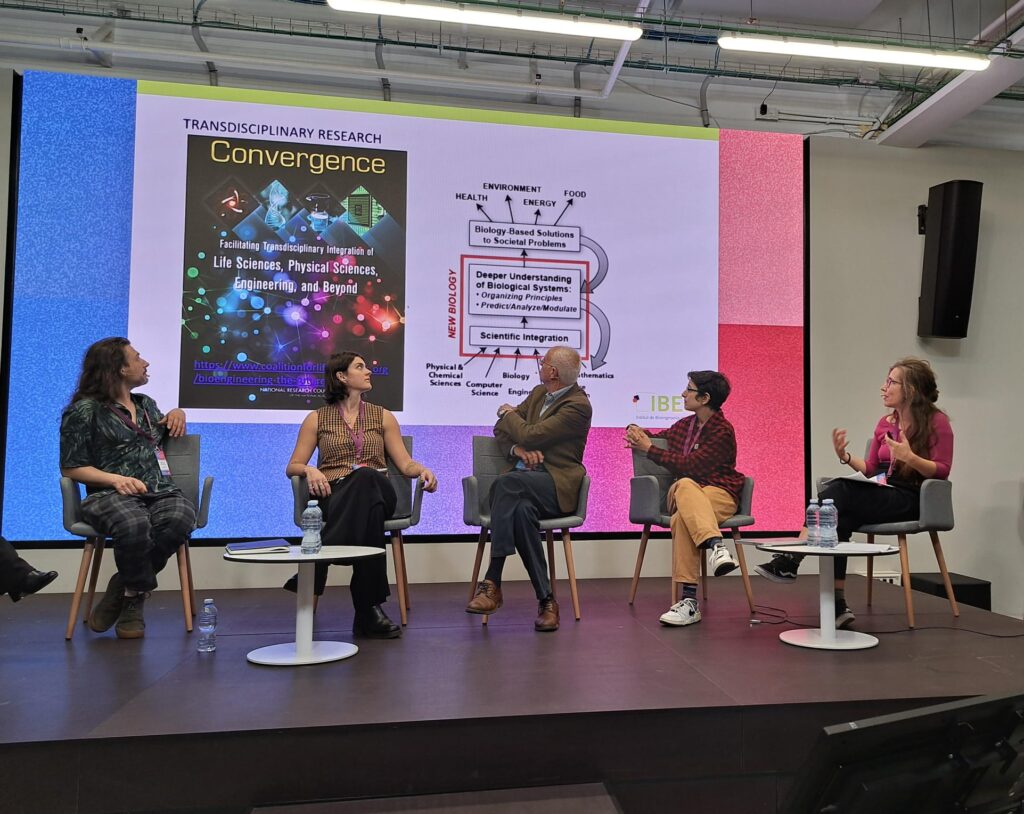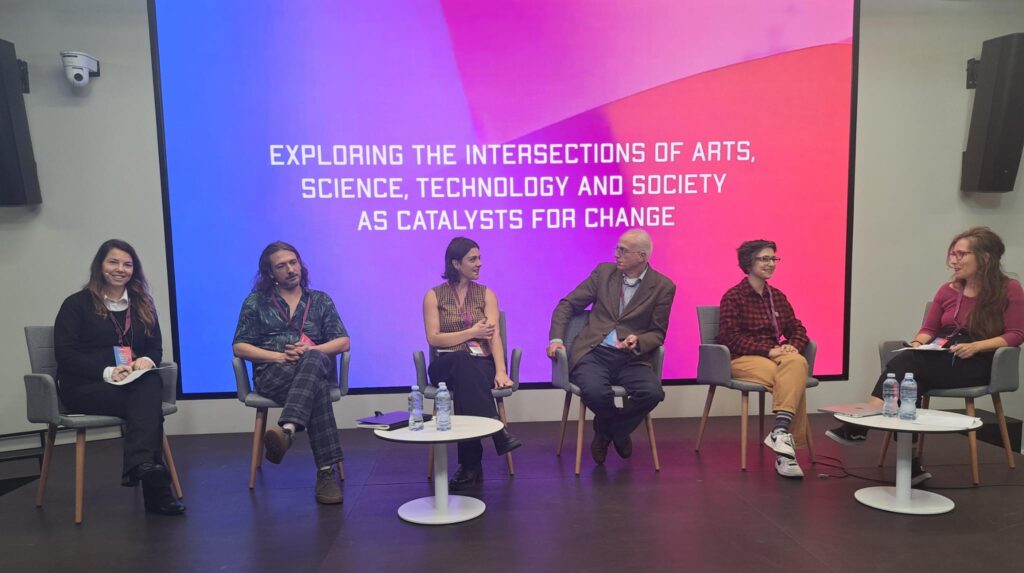The S+T+ARTS Symposium: Exploring the intersections of Arts, Science, Technology and Society as catalysts for change took place on 29-30 October. There, Teresa Sanchis, IBEC’s Head of Strategy, had the opportunity to explain the Institute’s Arts and Science programme and discuss the importance of effective intermediaries and metrics for measuring the impact of projects that combine creativity and scientific innovation.

Institutions and experts agree that collaboration between art and science is not only enriching, but also essential in order to face the challenges of a society in constant change. This growing interest in the symbiosis between art and science was evident at the S+T+ARTS Symposium, held on 29th and 30th October at the Universitat Oberta de Catalunya (UOC). This event brought together international specialists to reflect on the challenges and opportunities of evaluating the impact of transdisciplinary projects.
Teresa Sanchis, Head of Strategy at the Institute for Bioengineering of Catalonia (IBEC), was one of the experts participating on the panel entitled ‘Confronting Values and Measures in Projects and Policies’, where she highlighted the importance of having mediators who can facilitate communication between different fields. ‘We need mediators to help us communicate across disciplines,’ stressed Sanchis, alluding to the complexity of developing metrics that accurately reflect the impact of projects that combine art, science and technology.
Sanchis had the opportunity to explain IBEC’s ‘Art and Science’ programme, which promotes different aspects. On the one hand, it encourages collaboration between artists and scientists to address issues related to bioengineering and the human condition. On the other hand, it seeks different spaces in which to transfer the activities and research results of its laboratories, in places apparently distant from scientific activity, such as museums, festivals and/or art galleries. In addition, Sanchis mentioned that, although progress has been made in creating alliances or collaborations, there are still important challenges in terms of measuring and communicating the results of impact. ‘We are learning to measure and communicate our impact effectively,’ said Sanchis.
The S+T+ARTS Symposium was therefore an opportunity for IBEC to present its initiatives in a space of dialogue and knowledge exchange, which is key to pursuing the synergy between art, science and technology.








